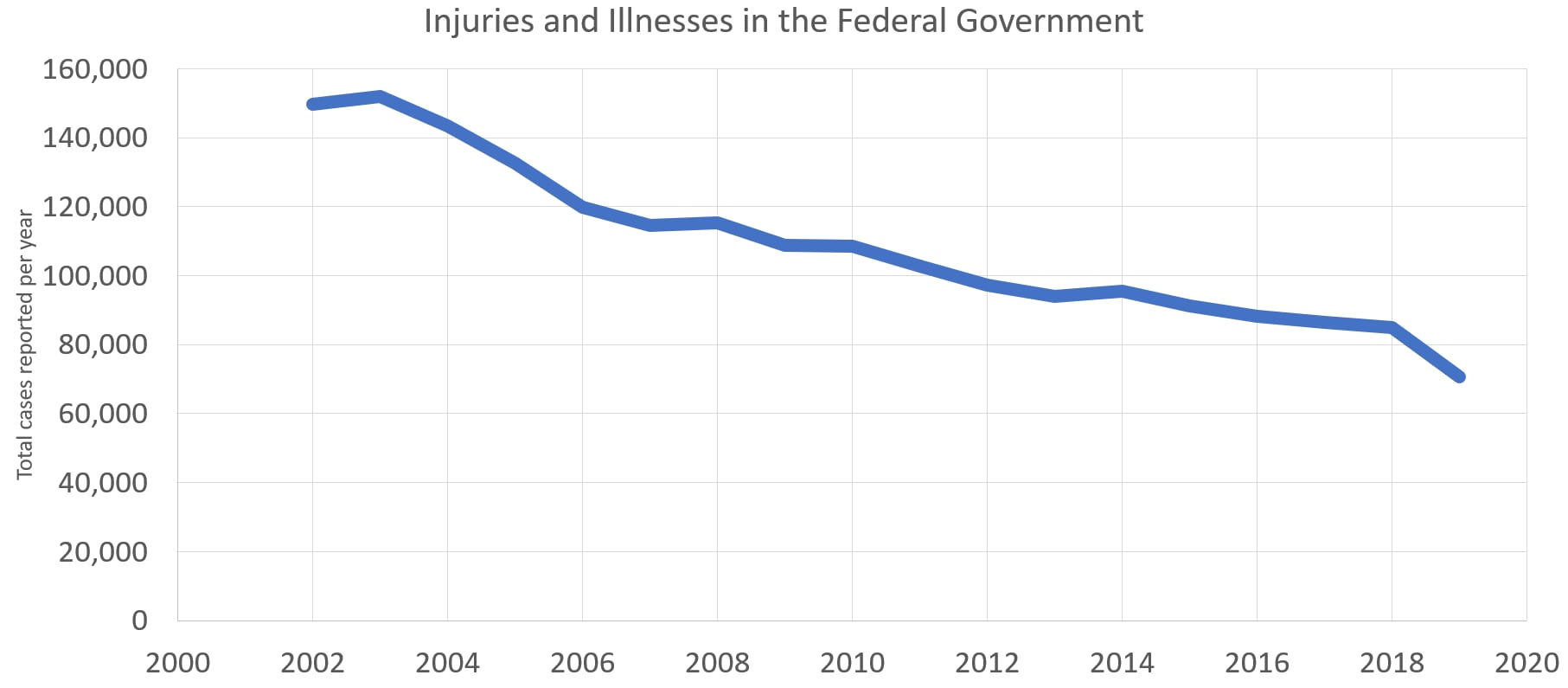Injuries in the federal workplace have been on a steady decline over the past two decades, with the number of reported cases in 2019 less than half of what they were in 2002.
According to statistics kept by the Department of Labor’s Occupational Health and Safety Administration, both the total number of cases and the rate of reported cases per 100 employees has declined in the federal government, going from a rate of 4.95 cases per 100 employees in 2004 to just 2.46 per 100 in 2019.

By contrast, Bureau of Labor Statistics data found that all industries had an average of 3.1 recordable cases per 100 employees in 2018.
A majority of the injury and illness cases in the federal government happen to U.S. Postal Service employees, whose jobs often require more demanding and sometimes dangerous physical exertion. USPS also has the most on-the-job fatalities in the federal government, followed by the Department of Defense.
USPS employees are also prescribed more opioids on average than any other group of federal employees.
That opioid use — and its use among other federal employees — is part of the reason that the Trump administration buckled down on employee injury cases Jan. 9, by launching the Protecting Employees, Enabling Reemployment initiative.
“Each year, federal civilian employees sustain work-related injuries and illnesses. In 2018, federal workers filed almost 107,000 new claims and received approximately $3 billion in workers’ compensation payments,” Office of Management and Budget acting Director Russell Vought wrote.
“Many of these work-related injuries and illnesses are preventable, and executive departments and agencies can and should do more to improve workplace safety and health, improve efficiencies, reduce the financial burden of injury on taxpayers, and relieve unnecessary suffering by workers and their families.”
The PEER initiative aims to make agencies improve or maintain their performance in reducing injury and illness rates, reducing the time lost to such cases, increasing the filing rate for compensation claims, increasing timely filing of wage-loss claims, increasing the rate of return to work in the 45 days after injury, improving the overall rate at which employees return to work and using the Department of Labor’s electronic filing system for workplace injury or illness.
“The Secretary of Labor shall lead the initiative by measuring both governmentwide and agency-level performance. Each executive department and agency shall bear its own costs for participating in the PEER Initiative,” Vought wrote.
Jessie Bur covers federal IT and management.





